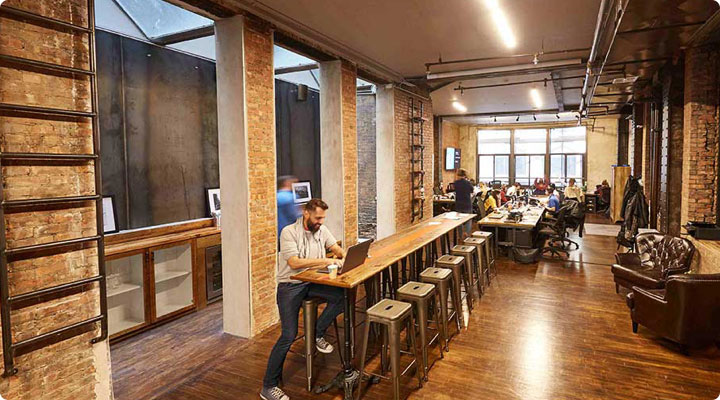Ready to see it for yourself?
One of our workspace experts will reach out to you based on your communication preferences.

Collective workspaces - aka coworking spaces - are increasing in popularity. Once the domain of small startups and entrepreneurs, major companies like Verizon and IBM are now experimenting with this office layout.
Measuring the performance of these spaces requires an approach that matches their uniqueness. You can’t rely on the same Key Performance Indicators (KPIs) that you would when measuring the performance of a typical office. Similarly, using traditional enterprise performance management systems will be relatively ineffective in a coworking space. You need to modify your approach to fit this new setting.
To leverage a coworking space to its full potential, apply the following KPIs. They’ll provide you with a clearer understanding of how a space is performing, and what you can do to address potential weaknesses.
In coworking spaces, you don’t want to focus simply on the cost per person. Instead, you should measure the performance of dedicated workstations. Keep track of their usage throughout the day. Specifically, focus on the following KPIs:
There are several different types of spaces within a coworking office. Some merely consist of individual desks. Others include conference rooms and dedicated workstations. These areas allow larger groups to work together on projects.
Understanding how often people and business units take advantage of these collaborative spaces will help you better understand their value. If the collaborative areas appear to be in high demand, you may want to improve the office by making it more available. On the other hand, if they’re not being used often, some might be more effective as areas for individuals to work.
These KPIs are relatively easy to track. Every month, review how many times conference rooms were booked. You should also keep track of collaborative workspace usage. If your coworking space offers communication tools, like video-conferencing rooms, find out how often they’re employed as well.
This information will let you know whether your coworking space is more attractive to individuals and small groups or larger teams.
According to a recent survey, 75% of teams using coworking spaces indicate they are likely to continue using the same space for at least another year. That’s an encouraging statistic. Reducing tenant churn should be a key goal of anyone operating a coworking space; the less time spent trying to attract new tenants, the better.
That said, while the 75% average may be impressive, there’s always room for improvement. Tracking the right KPIs will help you identify what steps you can take to further reduce tenant churn. The following are key metrics worth paying attention to:
Cost of Acquisition per Marketing Channel - How much it costs to acquire a new tenant per each marketing medium
These KPIs give you a clear view of how successful your marketing efforts are at attracting new tenants. You can use insights gleaned from them to devote your resources to the most effective channels.
Pay attention if your member retention rate drops below 75%. If you’re falling below the average, it means you need to take steps to ensure the coworking space better serves your customers. Along with measuring KPIs, you could simply distribute regular surveys to your customers. Ask them what you can do to improve the space. Their feedback will make it easier to plan an effective strategy and make adjustments to the environment.
Recent statistics indicate that the percentage of coworking spaces that make a profit is steadily increasing, while the percentage of coworking spaces that lose money is dropping noticeably. As more and more organizations embrace the collaborative benefits these spaces offer, they’re likely to become even more profitable.
That’s why it’s necessary to track certain KPIs regularly. You need to know how your space is being used in order to maximize your revenue. That said, with major companies giving coworking spaces a try, it’s also important to anticipate how future tenants will use them.
The needs of your current tenants may shift as you attract larger businesses. Monitor KPIs vigilantly, and you’ll be prepared to make the necessary changes to accommodate new clients when they arrive.
Rae Steinbach is a graduate of Tufts University with a combined International Relations and Chinese degree. After spending time living and working abroad in China, she returned to NYC to pursue her career and continue curating quality content. Rae is passionate about travel, food, and writing, of course.

Are you looking for a NYC event venue for personal or business occasions? Do you need a fresh perspective for your workday, a business address or virtual mailbox? If it’s time to level up your business and you’re looking to make some serious marketing moves, we have the answer for you!
Please select a different location.